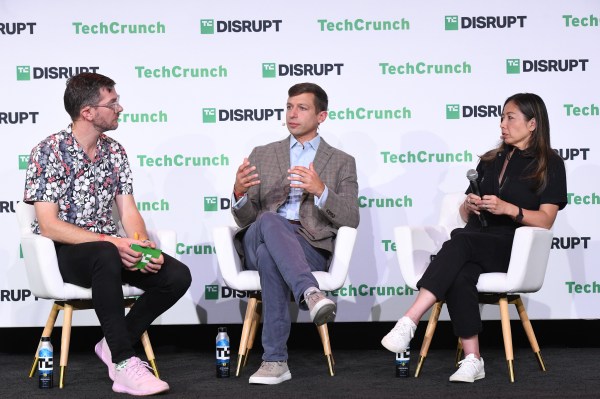“The aim of Intrinsic is to democratize the access to robotics,” Wendy Tan White, CEO of Intrinsic, told me at TechCrunch Disrupt last week, where she appeared alongside Brian Gerkey, director of Open Robotics, which was recently acquired by Intrinsic.
The acquisition of OSRC – the commercial arm of Open Robotics – received a mixed reception across the industry, in part because the messaging around the acquisition was a little fuzzy. Intrinsic clarifies what parts it bought and which parts stayed part of the Open Source Robotics Foundation (OSRF), which remains independent.
On the one hand, having Google money (sorry, Alphabet money) means that, in theory, the open source project should be well-provisioned. On the other hand, Google has had some mixed results, both in open source and in robotics. Android is probably one of the world’s best-known open source projects, but critics say that some of the best parts of it aren’t as open as they should be, and Google keeps making choices that make Android less complete — for example, SMS or dialing apps are no longer a core part of the OS. That’s . . . curious, given that making calls and receiving texts are, to many, a core aspect of having a phone in the first place.
On the robotics front, Alphabet has a somewhat mixed history, too, as Brian summarized in this edition of the Actuator newsletter. It’s against that backdrop that the Open Robotics acquisition received some raised eyebrows: It’s a core part of a lot of robotics projects — as the variety of applications teased for ROSCon later this year will attest.
So, I asked the duo whether ROS is safe in case Alphabet decides to run another round of layoffs akin to the 12,000 employees they cut earlier this year.
“It’s up to us to actually make it work, but I think we’ve really got a shot,” Gerkey said, adding that he felt the acquisition was the right thing to do in order to continue growth and research. It supports the open source movement but also protects the tools on which they relied, he said.
White pointed out that Intrinsic is a separate entity and has some level of protection. That may be true, but Intrinsic itself took some layoff losses earlier this year, as Everyday Robots (an ambitious leap into the future of robots that can operate in close proximity with humans) got discontinued.
“But what we saw was that we needed to have a step change in order to really take that development to the next level and be able to really provide what the whole robotics community needs in ROS. And that’s really what motivated the decision to merge with Intrinsic,” Gerkey said. “Honestly, it was an opportunity for us to be able to really commit over the long-term to supporting all of that open source software and to do it not out of a sense of altruism or charity. We’re not just doing this because we think it’s good for the world. We’re doing it because we’re also relying on those tools ourselves.”
“When we were thinking about actually merging together, we thought both ways about how we’re going to protect that [open source] community. So we actually continue to invest in it. In fact, there’s more resources now that are dedicated with Intrinsic specifically to the open source,” added White. “I also know to step change and disrupt the whole industry, you cannot do it on your own. The open source model works well, and a whole-ecosystem model works very well.”
“It doesn’t make sense to just take a random piece of software and throw it out into the world. It actually takes some consideration to think about. What’s the value that this is going to provide? And can I provide it in a way that people can really make use of it and can I commit to supporting it?” said Gerkey. “When we think about what makes sense to be open sourced, we really want to look for the things where we’ve produced something internally that we think is really going to be a game changer for folks out in the world and it’s going to be reusable. It’s not something that’s specific to our software stack, but rather it’s something that people can use in a wide variety of settings.”
You can see the full interview below:
Correction: An earlier version of this article confused Brian Gerkey’s role as former CEO and co-founder of the Open Source Robotics Foundation (OSRF), and its distinct status from the Open Source Robotics Corporation (OSRC). Intrinsic acquired the latter, while the former remains independent. The headline and article above have been updated accordingly.
